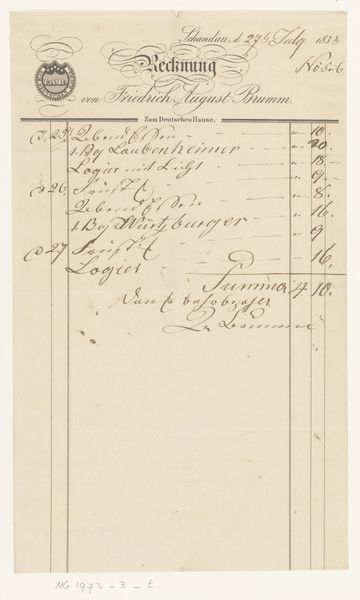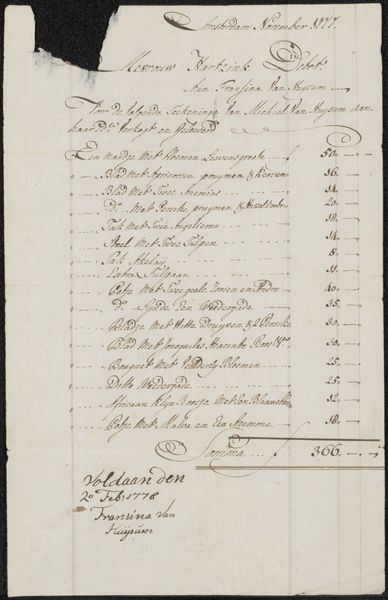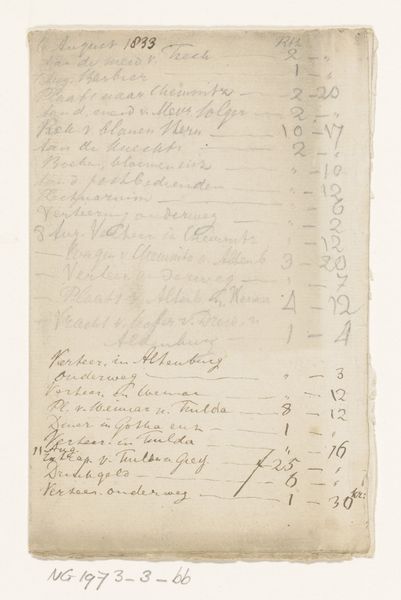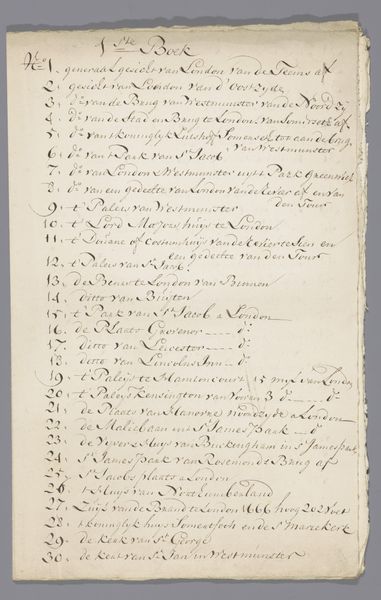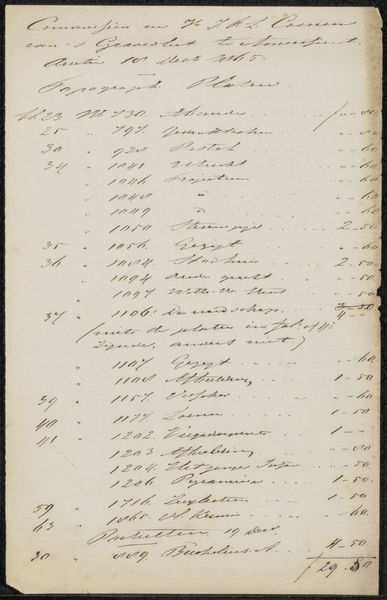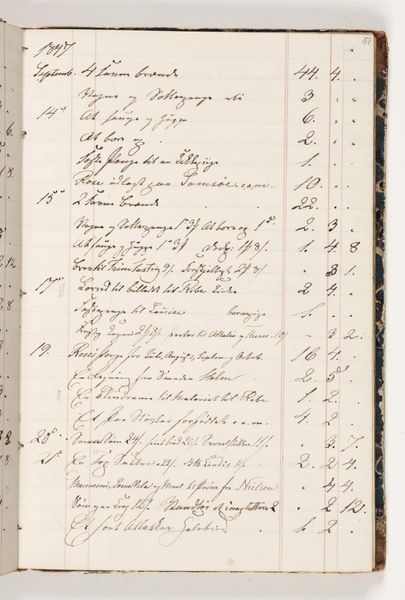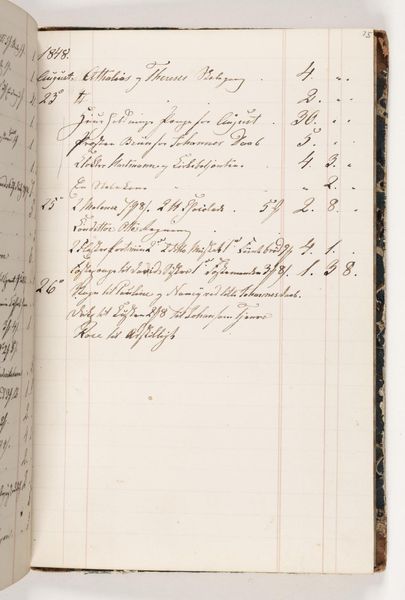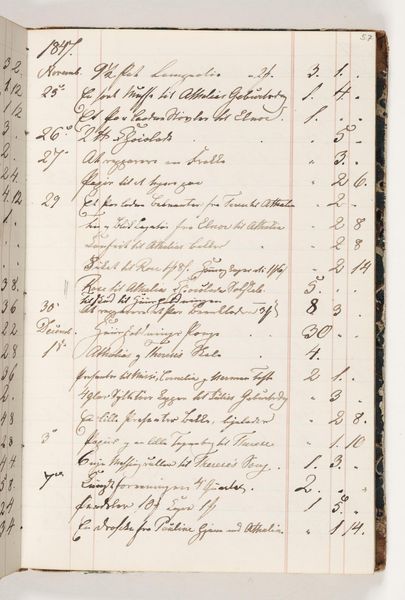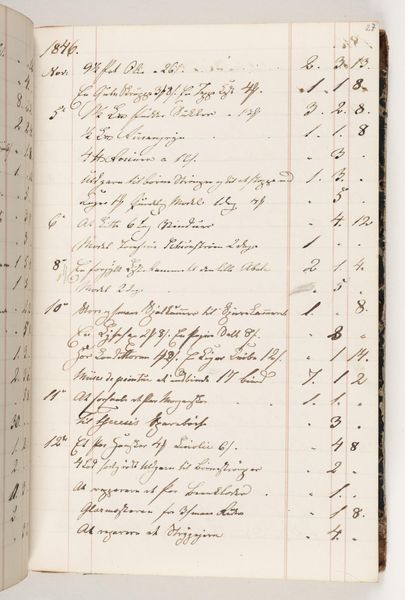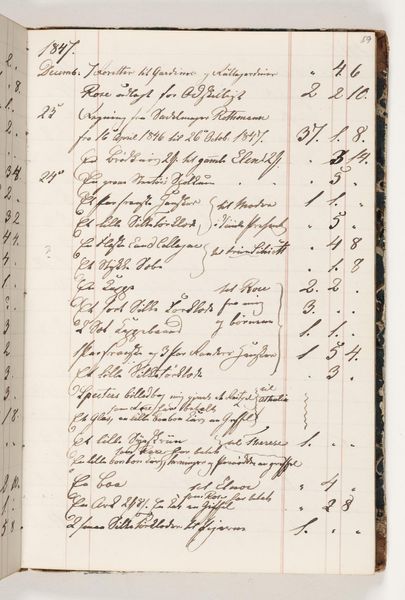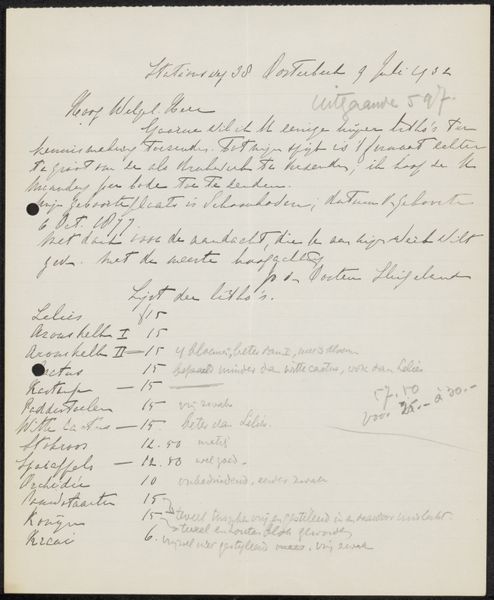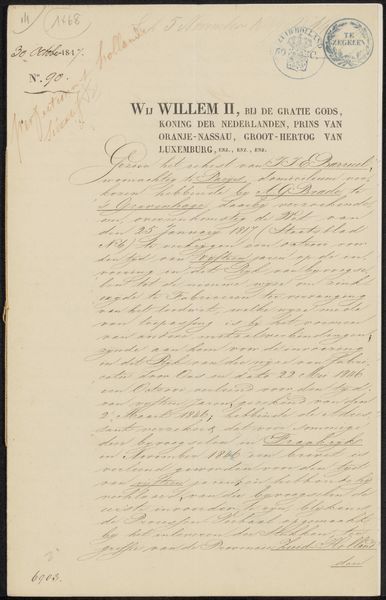
Trade Card for Charles Skipper, Letter Press and Lithographic Printer 1828
0:00
0:00
drawing, graphic-art, print, paper, typography
#
drawing
#
graphic-art
# print
#
paper
#
typography
Dimensions: Sheet: 12 11/16 × 8 1/8 in. (32.2 × 20.7 cm)
Copyright: Public Domain
Curator: This trade card for Charles Skipper, Letter Press and Lithographic Printer, dating from 1828, offers a fascinating glimpse into the world of early 19th-century commerce. Editor: Yes, it is currently located at the Metropolitan Museum of Art. It's interesting; I initially see just a chaotic list, but there's also something really beautiful in the lettering at the top. What do you see in this piece, beyond the obvious functionality? Curator: For me, the real interest lies in understanding its social context. This wasn't simply a bill; it's a form of advertising, a carefully constructed image of Skipper's business. What can the design, with its ornate typography, tell us about the intended audience and their values? What does it suggest about the rising merchant class of the period, and their engagement with print culture? Editor: I see what you mean! So the deliberate style of the lettering and overall design would appeal to a particular clientele? Did they value elaborate, careful, decorative text and imagery? Curator: Exactly. It speaks to ideas of trustworthiness, skill, and perhaps even sophistication. Consider also how printing technologies were rapidly changing at this time. How does Skipper’s trade card position his business within this changing landscape? Is he emphasizing tradition or embracing modernity? Editor: That’s a really good point. It's interesting to consider this document as both a transaction record and a marketing tool, aimed at conveying something specific about Skipper's identity. It makes you think about what modern-day documents are really "saying." Curator: Absolutely! This card opens up broader questions about the intersection of commerce, identity, and print culture in the 19th century. It's far more than just an old invoice. Editor: It's amazing how much historical and cultural information can be gleaned from one simple card. Curator: Indeed. It invites us to consider how seemingly mundane objects can reveal so much about the past.
Comments
No comments
Be the first to comment and join the conversation on the ultimate creative platform.

